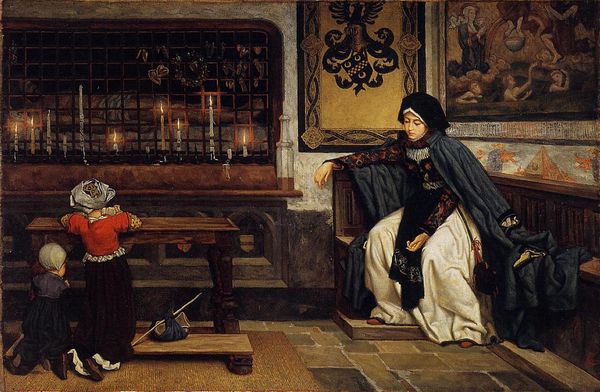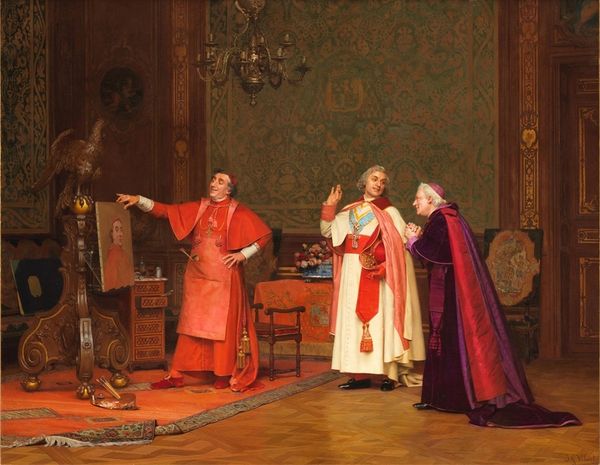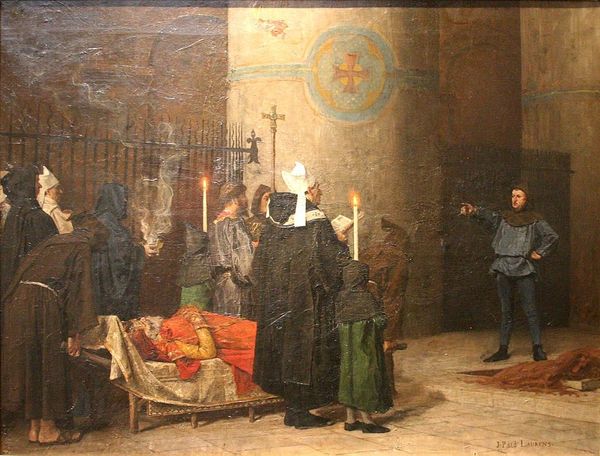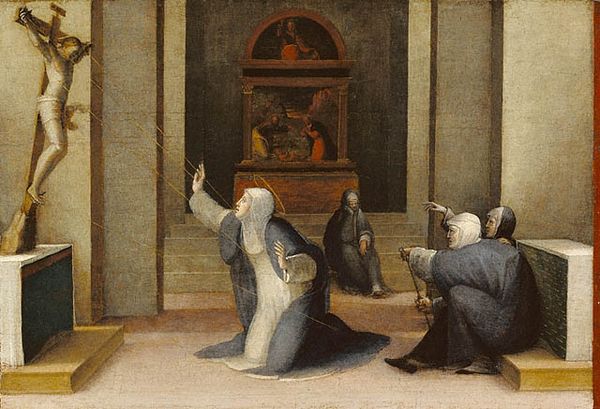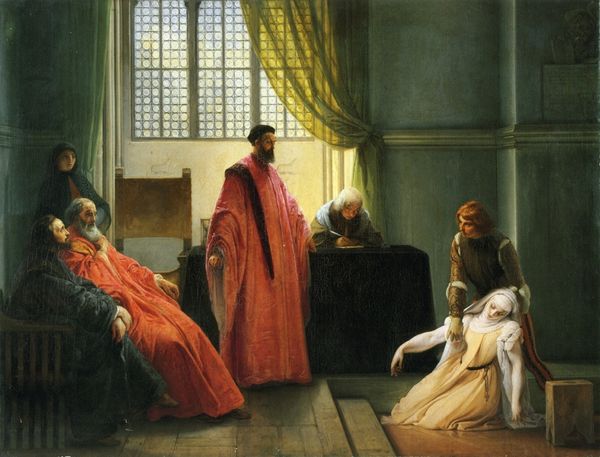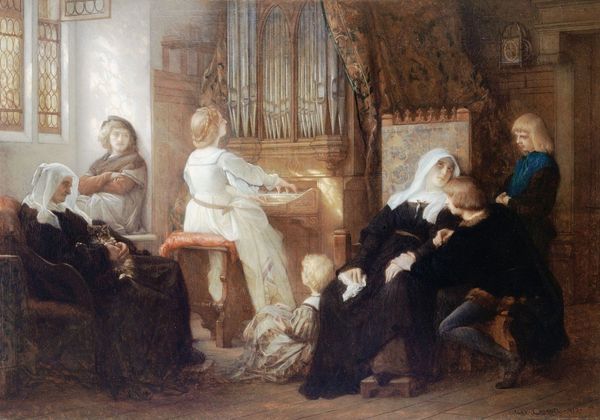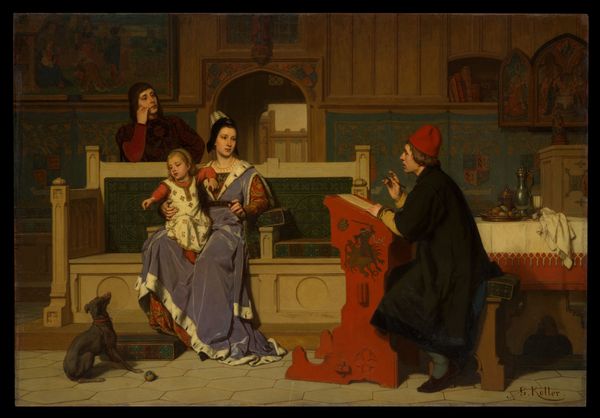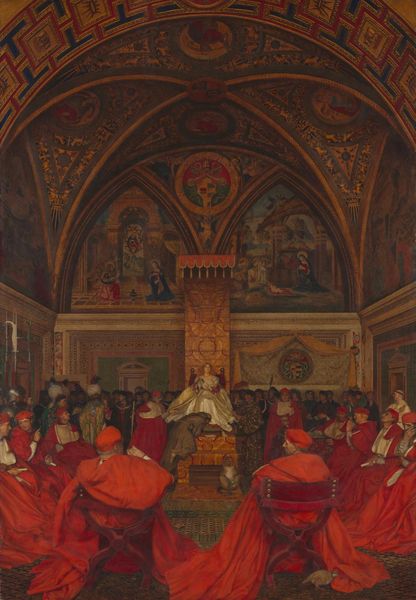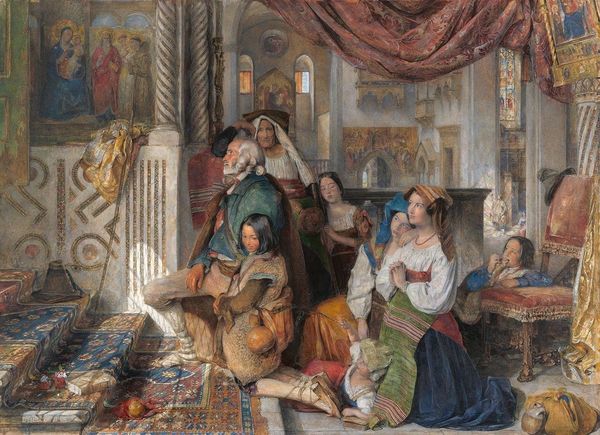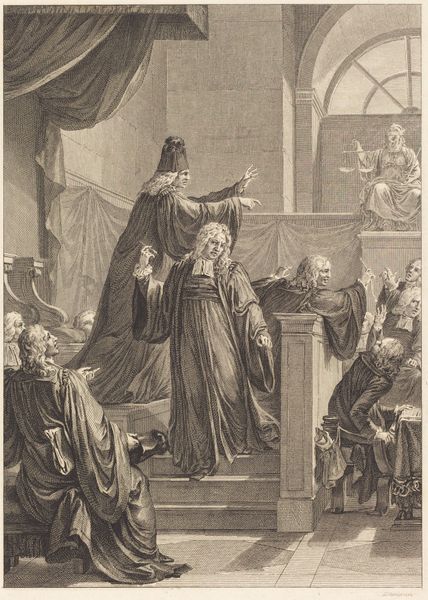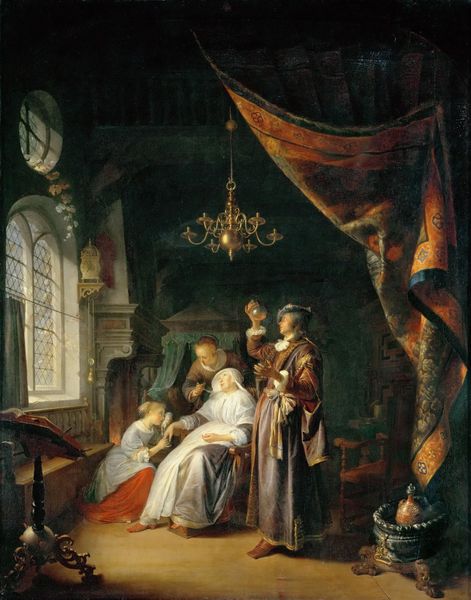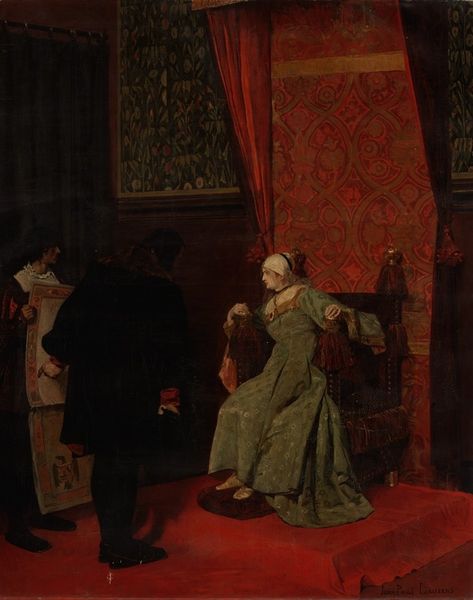
The Pilgrims at the foot of the statue of Saint Peter in Saint Peter's Church 1864
0:00
0:00
leonbonnat
Musée Bonnat, Bayonne, France
Copyright: Public domain
Curator: This painting, created by Léon Bonnat in 1864, captures "The Pilgrims at the foot of the statue of Saint Peter in Saint Peter's Church". It resides now in the Musée Bonnat, in Bayonne, France. It certainly feels rooted in the traditions of history painting. Editor: It has such a solemn feel. The lighting focuses attention on the devout pilgrims; their bowed heads create an intimate, almost secretive mood. The texture of the paint itself adds to that feeling – there’s a grittiness that keeps it grounded, real. Curator: Bonnat was working within the burgeoning realist movement. Note how he painstakingly documented the architectural details, and different social strata participating in a religious rite. He was after accuracy but also capturing the emotive experience of piety, deeply embedded in the socio-political fabric of 19th century European life. Editor: It’s impossible not to notice the clear delineation of gender and perhaps even class; The women grouped together on the right in identical white head coverings almost suggesting a form of prescribed devotion, whilst a lone dark figure is almost entirely swallowed up by shadow in the lower-left. The sculpture looming in the centre of the scene feels like an overwhelming representation of institutional power that perhaps these individuals look towards as their hope, though they exist so differently within its orbit. Curator: Exactly. Consider too, that this was painted during a time of considerable political upheaval. Italy had only recently unified. Religious iconography would be deliberately chosen, subtly commenting on social and political situations by subtly influencing sentimentality within public opinion. Editor: Absolutely, I see Bonnat perhaps even highlighting the social roles religion and class play in maintaining order, or a perceived sense of order. The women almost appear posed and contained, in such direct contrast to the statue whose base they surround - they embody the weight of established tradition. Even the gaze of the youngest girl feels poignant - suggesting something about the expectation carried between generations in terms of religion. Curator: Understanding that period through this painting provides a deeper understanding of how art serves, whether intentionally or not, as historical document. Editor: Precisely. By understanding the perspectives presented in the scene alongside an acknowledgement of the prevailing power dynamics, the visual experience becomes one which informs far beyond the immediate, creating a dialogue rooted in historical understanding that also speaks to wider implications across gender and identity, through a religious lens.
Comments
No comments
Be the first to comment and join the conversation on the ultimate creative platform.
